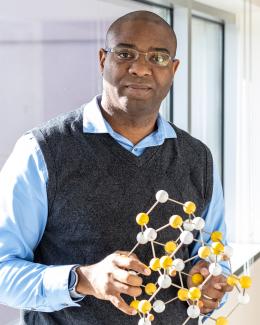Abstract
Lithium-sulfur (Li-S) battery is one of the most promising alternatives for the current state-of-art lithium-ion batteries (LIBs) due to its high theoretical energy density and lower production cost from the use of earth abundant element - sulfur. However, the commercialization of Li-S batteries has been so far limited to the cyclability and the retention of active sulfur materials. Using co-electrospinning and physical vapor deposition procedures, we created a class of chloride-carbon nanofiber composites, and studied their effectiveness on polysulfides sequestration. By trapping sulfur reduction products in the modified-cathode through both chemical and physical confinements in a conductive host, these chloride-coated cathodes are shown to remarkably suppress the polysulfide dissolution and shuttling between lithium and sulfur electrodes. We show that not only the binding energy but also the electronic conductivity of the host plays an important role on the reversibility of sulfur-based cathode upon repeated cycles. Electrochemical analysis of the chloride-modified cathodes over hundreds of cycles indicates that too strong binding of the sulfur species may lead to the decay of Coulombic efficiency. Cells containing indium chloride-modified carbon nanofiber outperform cells with other halogenated salt modifications, delivering an average specific capacity of above 1200mAh g-1 at 0.2C over 200 cycles. Once loaded with high S content, it shows stable capacity retention with only 0.019% decay per cycle from 5th to 650th cycle. It also shows stabilized cyclability and enhanced Coulombic efficiency in the absence of traditional anode stabilizer lithium nitrite.


